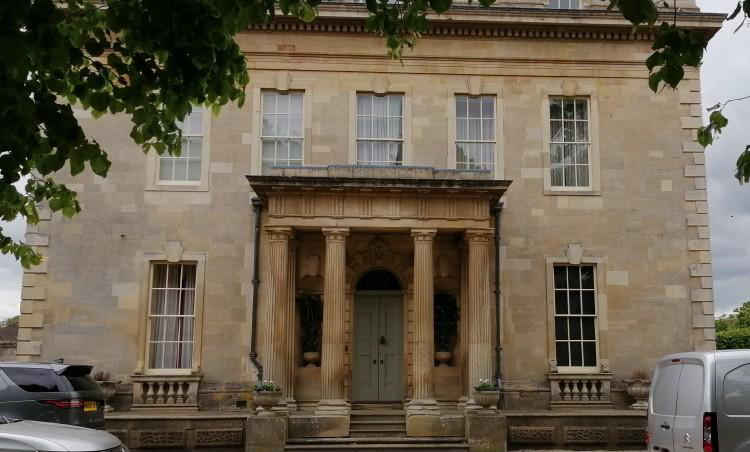

Barn Hill
Barn Hill was originally known as Clip’s Hill, probably because of a noble Saxon resident called Kilpis. It was a prosperous residential area from the Middle Ages, with a sheep market at the far end, later transferred to Sheepmarket because of the smell and inconvenience. Generally regarded as the most attractive street in Stamford, all but two of the houses are two-star Grade 1 listed.
There are several houses of note in Barn Hill:
Stukeley House, No. 9
Barn Hill’s most illustrious resident was the famous 18th century antiquarian, clergyman and medical practitioner, William Stukeley. Born in Holbeach, Lincolnshire, he is now recognised as one of the father figures of British archaeology. While in Stamford, during 1729 – 1747, he published his pioneer research into the Avebury and Stonehenge stone circles and he also drew many of Stamford’s medieval buildings. He bought no. 9, now known as Stukeley House and lived there for 18 years, busying himself with beautifying it and developing the large rear garden and orchard attached. Stukeley claims that Charles 1st stayed in the house in May 1630, prior to his surrender to the Scottish army.
No 16
No. 16 Barn Hill was formerly All Saints’ Vicarage. It was an important medieval house – the Hall Books (minutes of borough meetings) show it was one of the focal points of the town and the scene of public proclamations. William Stukeley writes in his diary: “There was an open hall with many scripture sentences around it; a stone staircase to the bed chamber which was at first hung with tapestry, ceiling wainscoted with oak.
Barn Hill House
This house was built in 1698 on the site of a bowling green on the Noel family’s estate. Only the interior walls of the original house survive as it was altered in the mid-18th century and the classical front dates from this time. The Brown family lived here from 1780 to 1841. The site of the nearby St Clement’s church and churchyard was incorporated into the garden in 1832. In 1842 the house was sold after Edward Brown’s death to the Marquess of Exeter for £2500. He bought the house to provide accommodation for his guests when Queen Victoria visited Burghley in 1842. His architect Bryan Browning transformed the North front to overlook the extensive garden and the house was restored.
After Victoria’s visit, the house was rented out by the Exeter family for a hundred years. It was requisitioned in World War II but then not released. It was compulsorily purchased by the Council in 1955 to use as a clinic. After some years in this use it was sold by the Council and is now again owned privately. In 1994 the house was chosen for the Fever Hospital in the BBC production of Middlemarch. This series was filmed in Stamford and the surrounding area.
The following advertisement to let the property appeared in March 1844:
‘The residence of the late Edward Brown has undergone extensive alterations and is now finished in a style calculated for the residence of a gentleman of fortune. There is extensive stabling and coach houses and every requisite for a genteel family, excellent garden, lawn and paddock adjoining as a sporting residence. It has particular advantages having the Cottesmore and Milton hunts in the immediate vicinity. Applications to be made at Mr Browning’s offices, Stamford.’